Satoshi Kon – A Memorial
Well, after nearly two weeks trying to resolve my personal tech problems, I’ve got a working computer back in my possession. I’d like to thank Mollybibbles for covering for my last update and apologize for the delay in this one. I originally intended for this to go up the week following Kon’s death, but due to previously mentioned tech problems that didn’t happen.
Before we begin I’d like to ask that, if possible, you choose one of these songs to play in the background while you read this. Each of these songs comes from the soundtrack of one of the films I’ll be going over. That being said, once you’ve selected a song to play, I ask that you enjoy this article in memory of a great artist.
Memories – Madama Butterfly
Perfect Blue – Cherish These Memories
Millennium Actress – Actress in Time Layers
Tokyo Godfathers – Gin
Paranoia Agent – White Hill
Paprika – A Drop Filled With Memories
To clarify some details of the incident for those who aren’t familiar with Satoshi Kon; on August 24, it was confirmed by Otakon’s board of directors, Jim Vowles, through MadHouse studio president, Masao Maruyama, that anime director Satoshi Kon had died of undisclosed causes. Leaving the fate of his current project, the film Yume Miru Kikai, aka The Dream Machine, at the time unknown. The day following his death a final personal letter was posted on his blog, Kon’s Tone, recalling May 18th, when his doctor was quoted “It’s the latter stages of pancreatic cancer. It’s metastasized to several bones. You have at the most half a year left to live.” In his final months, Kon rejected conventional medical cancer treatment and instead took the time to have his copyrights and full assets taken care of and placed under the rights of his wife. His final project, The Dream Machine, was a dire concern of his, not only for the finished product, but for the efforts put into it by his staff. He tells that Mrauyama of MadHouse assured him, “Don’t worry. We’ll figure out something, so don’t worry.” Satoshi Kon will be missed and sorely grieved for within the anime community, as his death marks the loss of one of the anime industry’s few pioneers left to champion anime as a truly legitimate and respectable art form outside of its own subculture.
Kon was best known for his groundbreaking psychological thriller, Perfect Blue, up until more recently when his mind bending roller coaster of a film, Paprika, saw international release and marveled audiences around the world. Kon’s fluid cinematic vision, in sync with his sense of dodgy circular story telling, is part of what made his films so astounding to watch as stories unfold and circle back unto themselves. He showcases an amazing flare for the illusionary and the deceptive, in the ways he manages to meld worlds of fantasy and delusion into his stories to create a kind of speculative reality where the line between what is real and what is not within the story becomes so broad that whether there is a real or fake to either side of the line becomes a question in and of itself.
Originally an art student intent on becoming an illustrator or painter, Satoshi Kon first entered the world of manga as an author and artist of his own short serialized title in Kodansha’s Young Magazine, and shortly after as an editor for the same magazine. It was during his time as an editor that he got to know famous manga author & artist, Katsuhiro Otomo, whose eventually world famous cult hit, Akira was still being published at the time. Through this friendship, Kon would come to work together with Mr. Otomo on the manga, World Apartment Horror: a manga adaptation of Mr. Otomo’s 1991 live-action film of the same name, and it was later in that same year that, Kon would make his first appearance in the anime industry as an animator on the film, Roujin Z, also written by Katsuhiro Otomo.
4 years later in 1995, Kon would reprise his work for Mr. Otomo with a collection of short films entitled, Memories, but this time, not as an artist or animator, but as the writer for the first of the three short films: the sci-fi thriller, entitled Magnetic Rose. Kon’s work with Magnetic Rose provided him with a new kind of experience in story telling, where he was forced to try and convey the basics of his story through words alone with no accompanying visuals. The story of Magnetic Rose follows a crew of the deep space freighter, the Corona, whose job is to salvage abandoned satellites when they receive a mysterious distress signal. The crew finds their way to a field of debris caught in a powerful magnetic field, at the center of which is a large space station. With two men standing by on ship as operators, Heintz and Miguel are sent in to investigate the origins of the SOS. Once inside, the two men find that the space station was the extravagant living space of a retired opera singer, one Eva Friedal. However, upon investigation the space station seems entirely abandoned. From here on out the film dives headlong into a psychological horror as both Heintz in Miguel fall prey to powerful hallucinations, while their fellow crewmembers on board the Corona can only watch. By this point, even before the height of his career, Satoshi Kon had his foot firmly in the door with the anime industry as a key name behind successful works of the eerie and suspenseful nature, and a reputation that would become his biggest trademark.
His first role as director, and the first of what would be a lasting partnership with Mad House studios, was the film Perfect Blue, loosely based on the Yoshikazu Takeuchi novel of the same name. Released in 1998, his first big film would propel him to instant success, as he unknowingly produced a landmark film for the anime industry. In an interview with ANN, he admits that most of the staff working on his first film didn’t actually know what the film was about until it was finished and they screened it for the first time. An appropriately wild start for the emotional and psychological joyride Perfect Blue would prove to be.
To speak of the plot and story, the film follows a young up and coming pop idol named Kirigoe Mima, who abandons her singing career with small time idol group CHAM for a chance at becoming an actress. As she gambles her new career with a role on a minor television drama, she quickly finds that a fan obsessed with her when she was an idol has begun sending her threatening letters over having left the group CHAM. Paranoia over a stalker begins to grow, her make-or-break debut as an actress develops into an identity crisis, her agent signs her onto a number of lewd and distressing jobs that she reluctantly agrees to for the sake of her career. As all these anxieties pile up, Mima finds herself wrought with dreams and paranoid delusions that blur the line between reality and terror born fantasy. Battling with her persona as an idol, her role as an actress, her own identity, and who she’s trying to be as a professional, Mima’s sense of self is lost in the fray of expectations and a growing sense of alienation. The story itself is very well told and well characterized, while the dialogue plays further on the subject of what is real or not as Mima’s lines on the set of the drama series, Double Bind, overlap with her real life anxieties, accentuated where scenes in the drama reflect Mima’s true feelings while she lies to her agent and co-workers, and punctuated by a single, simple line: “Who are you?”
Perfect Blue was not only a brilliant work of art from the standpoint of quality alone, but as a landmark in anime production as one of few, if not the first, truly medium transcending thrillers. Never before had an animated feature attempted and succeeded in painting such a perfect portrait of nerve wracking and bone chilling suspense. Kon’s uniquely subtle vision not only created a fantastic story within the world of anime, but within the world of film as well. His use of paranoid hallucination in place of shallow jump scares and other stock horror gimmicks would be the start of his prevailing trend of deception and the question of what’s real in his later films.
Following Perfect Blue’s stellar success, Kon was a name in high demand, and at the turn of the millennium, producer Taro Maki approached Kon wanting “a movie like Perfect Blue”. A vague request to be sure, but as Mr. Maki put it; he wanted a “movie like a stereogram” that changes appearances at different angles. After a good deal of brainstorming with co-writer Sadayuki Murai, Kon found his finalized script. The story would be the story of a man interviewing an elderly woman, a once a famous actress named Chiyoko, as she recalls her life and career in a wonderfully diverse, ever changing montage of period set pieces and classic Japanese film references. As the old woman’s story goes on and the interviewer and his cameraman, and of course the audience watching them watch her, are gradually drawn into the world of her memories, we find that the two onlookers have slipped onto the set of Chiyoko’s story. So while the younger versions of Chiyoko journey through a mix of her memories of youth and her roles as an actress, the interviewer and cameraman find themselves running after Chiyoko through her adventures.
The real beauty of Millennium Actress might be in just how simplistic the story really is: A little girl falls in love with a man on the run. Before he leaves her, he gives her a single key, which he tells her is key to “the most important thing.” He vanishes into the night there after, and over half a century later, the once young girl, finds herself recalling the life she lived for love. What makes such a simplistic story so entertaining to watch is the way Chiyoko’s story begins grounded in reality and slowly but surely, without you realizing it, her life and her roles as an actress become seamlessly intertwined, and playing upon some of the camerawork in Perfect Blue, Kon’s directing makes Millennium Actress a fast-paced adventure, even without the aid of horror-oriented suspense, making it the first in Kon’s brief step away from the psychological thriller genre.
In 2003, Satoshi Kon once again dazzled film festivals around the world with the only of his films to move entirely away from the theme of illusion. Despite the lack of reality bending camerwork, Tokyo Godfathers was not without its fair share of lies, deceptions, and not-what-it-seems moments. The story of Tokyo Godfathers begins on Christmas Eve in Tokyo when three homeless bums; Hana, a middle aged transvestite; Gin, a divorced alcoholic gambler; and Miyuki, a runaway high school girl, find a baby girl in a back alley dumpster. The three then take it upon themselves to find the mother of the child. The films plays out like a crime-gone-wrong film as wacky coincidence and chance drag the three heroes and baby on a roundabout adventure through Tokyo. On the course of their adventure, the three each come to terms with their pasts, the lies they tell each other, the lies they tell themselves, and ultimately the reasons for their homelessness. Despite being a fairly down to earth kind of story with plenty of heartwarming family value moments, the film is not without its fair share of high-tension action scenes, culminating in what had become by this point, Kon’s ongoing motif of climactic chase scenes.
The premise seems realistic enough, if morbid and perhaps open to some dark humor, but the actual plot progresses in a way that mixes trends of comical crime-gone-wrong films and straight up comedy, playing heavily upon coincidence and a certain sort of fatalistic irony. The level of seriousness in the film has a way of dodging back and forth between heartwarming and sweet, to wacky and funny, and then to dark, depressing, and at times nearly heartbreaking. Kon proves with both Millennium Actress and Tokyo Godfathers that the freedoms of animated story telling can be used to give that subtle twist to conventional live action film styles that draws an audience in emotionally and not just on cheap thrills, and without having to go as far as to touch on the gratuitous overuse of explosions, violence, and sex gags that run rampant in popular anime and manga today.
Between Millennium Actress and Tokyo Godfathers, Satoshi Kon had become a popular and respectable name in both the anime industry. It was in 2004 that he was given the opportunity to direct an animated series, Paranoia Agent, his only such work; using a collection of unused ideas from his film projects. I’ll try not to take much time with this, in favor of directing you to Mollybibbles’s article on this instead:
I will say however, that among Kon’s many work, Paranoia Agent may be my favorite, not only for the sort of suspense you can only manage in an episode-to-episode sort of pacing, but because of the brilliant use of thematic timing where the mechanics behind the initially random seeming cases of serial attacks becomes all too clear by the climax of the show, and by the time you’ve gotten to the end of the story, you find yourself looking at all too familiar events that seem to beckon and taunt you to watch the whole thing again.
Moving right along, Kon’s most recent completed work captured attentions worldwide. Paprika presents its audience with a wild and turbulent vision of a world within the dreams of its characters. When a machine known as the Dream Console Mini, or D.C. Mini for short, a machine capable of projecting a wearer’s volatile and ever changing dreamscape onto a monitor, and more notably sharing that dream with others hooked into the same machine. When a prototype of the D.C. Mini goes missing in the hands of a rogue therapist, the trio of scientists responsible for the machine’s development embarks on a bizarre and horrifying adventure through the dreams of various suspects and victims in the mystery of who stole and sabotaged the experimental D.C. Mini. The titular character, Paprika, is a persona generated by and within the D.C. Mini by the film’s protagonist, Doctor Chiba Atsuko, which she uses in her renegade therapy practices. Among her patients we find our other protagonist, Konakawa Toshimi, a police detective wrought with stress over reoccurring dreams involving a recent murder case. Once wrapped up into the mystery surrounding the D.C. Mini, detective Konakawa and Dr. Chiba confront the megalomaniacal ambitions of the real thief and saboteur of the D.C. Mini project. Throughout all of this adventure, we watch the doctor and her alternate persona dodge in and out, almost always seamlessly, of other characters’ dreams, and by the end of the film the line between dream and reality is completely lost. I find it incredibly hard to describe the plot of this film without giving away most of the most engaging twists, as both hinge upon the transitions between dream and reality, and determining just whose dream it is being explored at any given moment.
One of the popular selling points of the film, as most often touted by blindly rabid fans, is the plot’s habit, and perhaps intention, of losing a lot of its viewers within the first several minutes of the film potentially for the entirety of the rest of the film. While I won’t act like it’s a “good” thing, I will admit that the film does require you to be paying attention to it to make any sense. However it certainly isn’t so convoluted or contrived that it comes across as entirely incomprehensible, even on the first go. I’ve often heard people on forums boast that no one ever understands what’s going on in Paprika when watching it the first time through. I can guarantee that while the story can be a little hard to follow if you aren’t watching, The only thing I can imagine making this film genuinely hard to understand would be the film itself, in that the gorgeous visual spectacle of it all could very easily distract you from reading or listening to the dialogue. That said, the film’s biggest point of interest is easily the sheer, and almost overwhelming, visual spectacle of the ever malleable reality within the projected dream world. Digging beneath both the possibly confusing pacing and the likely attention robbing visuals, the plot itself is fairly interesting, as we find the entire story hinging around a relationship that isn’t made entire obvious to us at the start, despite the fact that we watch the couple for nearly the entire film. The story plays with a theme of unspoken emotions, the sort of emotions we might in fact manifest more readily in our dreams than out loud to someone else in real life. Each character has a certain sort of regret or anxiety involving another person, but who that other person is, or how they feel in return is entirely up in the air. Like in all of Kon’s work, by the end of the story, you find yourself noticing how things were shown to you long ago, as far back as the very start of the film, about the things you could only have spotted had to known what you know at the end of the film.
Although Paprika was in fact Kon’s last complete film released, it was not his last piece of work. In 2008, the NHK network funded a project called Ani*Kuri15, in which fifteen well respected animation directors from across Japan, working with Studio 4°C, Gainax, Gonzo, Madhouse, and Production I.G, were each asked to create a short story of exactly 60 seconds, no more, and no less as a series of fillers between other regularly scheduled programming. Among these directors was none other than Satoshi Kon, and for his one minute short, he presented Ohayou/“Good Morning”, which followed a young woman through her morning routine through some of Kon’s iconic sense of style.
Part of what makes Kon such an interesting director is his ability to select a single theme within a story and center the artistic direction on that focal point, progressing the plot around that point while maintaining a self-contained kind of world in which karma and purpose are all tightly connected and resolved within the realm of the story. Perfect Blue deals with the subject of identity crisis, and whether Mima is who she thinks she is or whom others see her as. Millennium Actress dealt with a different kind of subjective reality in which Chiyoko’s memories of her lost love become eloquently intertwined and altogether indistinguishable from her roles as an actress. Paranoia Agent meddles with the repercussions of habitual escapism, as both a personal vice and as a sort of epidemic social disease. Tokyo Godfathers plays with the ideas of what makes a family and what it means to have a place to belong. Paprika toys with relationships and the unspoken feelings between people. All of Kon’s films boast strong, and often independent female protagonists, and culminate in some sort of intense chase scene, in place of a conventionally violent climax, like a fight scene, shying away from anything that might suggest promoting violence in the hero characters. Satoshi Kon is often contrasted with Hayao Miyazaki who tends to lean on themes of environmentalism and subsequently return frequently to rural settings, where as Kon embraced the modern form of Japan, both geographically and culturally; choosing to play with some of the social and psychological conflicts more common, if not exclusive to urban Japan. The two are indeed incomparable in terms of content, as their stories projected drastically different moods and messages, but it is agreed that the two were peers in their tier of cinematic story telling.
Last but not least, I’d like to leave you with a bit on Kon’s final film, still yet to be completed, Yume-Miru Kikai/The Dream Machine, is still set to be released at some point, despite Kon’s passing away. What little is known about the film as of yet can be summed up in a quote from Kon himself in an ANN interview dating back to 08:
“The title will be Yume-Miru Kikai. In English, it will be The Dream Machine. On the surface, it’s going to be a fantasy-adventure targeted at younger audiences. However, it will also be a film that people who have seen our films up to this point will be able to enjoy. So it will be an adventure that even older audiences can appreciate. There will be no human characters in the film; only robots. It’ll be like a ‘road movie’ for robots.”
However, for those who want to know more in detail (and can read Japanese) the film’s official site can be found here: http://yume-robo.com/
Kon’s passing is a sad event, possibly one of the most upsetting for me personally in regards to anime, in the past 20 years. His unique vision, sense of humor, and general talent as a director and artist will be sorely missed. I hope that those of you unfamiliar with some or perhaps all of his work, will take the time now to find yourself any or all of his works and see for yourself just what talent we as an audience and a community have lost in Satoshi Kon.





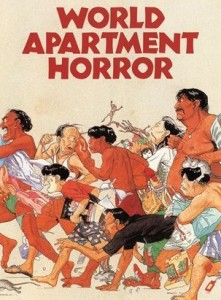
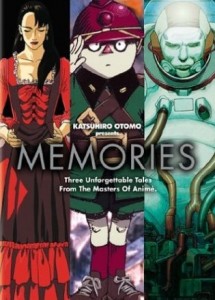


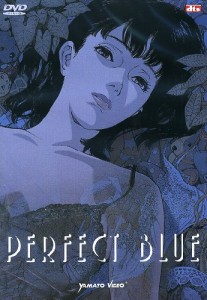

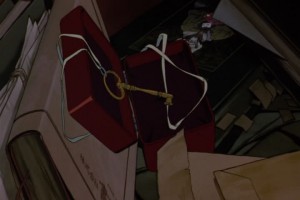
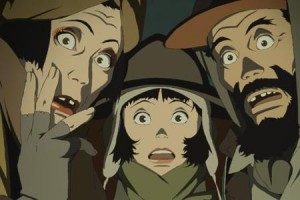
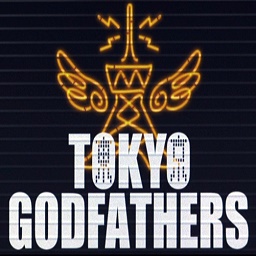

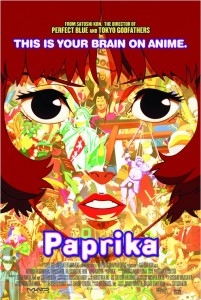


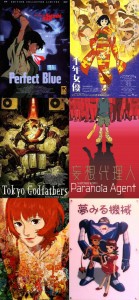



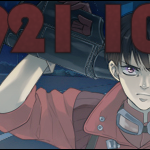










Glad the computer is fixed properly to produce this awesome article on Satoshi Kon. I admit I’d only seen one of his works before his passing and only now have taking the time to view all of his works.
I’ve only seen Millennium Actress myself. I do intent to go back and watch many more of his works, myself.
Not trying to plug anything there but Netflix has been my friend in being able to watch these titles from Kon and others of course as many are out of print or very difficult to find.
I’ve seen Paranoia Agent and Millennium Actress, both were amazing and Millennium Actress made me cry like a baby, I blame you Kana. >>
Kudos for your excellent summaries. It was worth the wait beyond techno-glitch. As you and other admirers have surmised Mr.Kon was a wonderful asset to the anime community. He will be missed by us all. I have watched Memories, Milennium Actress, and Toyko Godfathers. Enabled by your posting I will eagerly watch the remainder of Satoshi’s anime excellence when time permits.
Sad to say I’ve never seen any of his films, but this and the Japantor podcast where they talked about him really make me want to. I do know that we have some music from Perfect Blue in the server, I’ll be playing it a bit more from know on I think
[…] series, lightnovel and the 12 episode long animated series, ef -A Tale of Melodies-. Also, in my Satoshi Kon Memorial, I mentioned briefly the NHK sponsored Ani-Kuri 15 project that collected fifteen 60 minute short […]
[…] trouble. I considered using Satoshi Kon’s psychological thriller Perfect Blue, but I’ve sort of covered that before and I wanted something new. I considered another personal favorite, the little known Mononoke, but […]